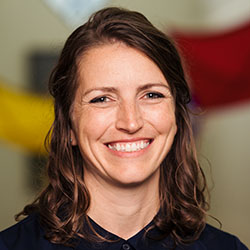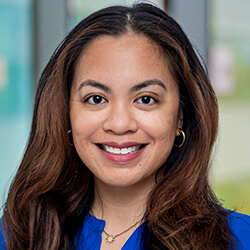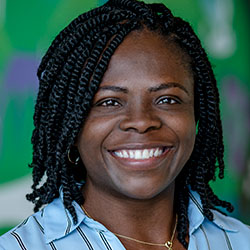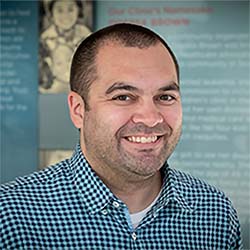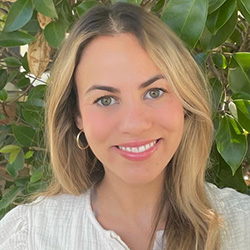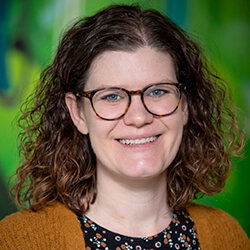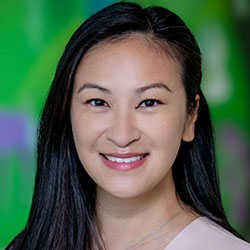How Is Sickle Cell Disease Treated?
We watch your child’s health closely and recommend the best treatments for them. Keeping careful track of their health ensures your child gets the care they need before more serious problems start. That helps them feel better and gives them the best chance of successful treatment.
"Seattle Children's and OBCC helped to save my daughter's life. They are like our backbone, standing with us."
– Amna, Jude's mom
Sickle Cell Disease Treatments
Regular check-ups and education
Regular check-ups are an important way to keep your child healthy. Most children with sickle cell disease visit the doctor every 3 to 12 months. The timing depends on their age, health and the treatments they are using. Some children need to see a doctor more often.
At clinic visits, we may check your child’s:
- Height and weight: to make sure your child is growing at a healthy rate.
- Blood: to count red blood cells and to look for signs of organ damage.
- Pee: for signs of kidney damage.
- Blood flow: to see if your child is at risk for stroke. We use sound waves (ultrasound screening) to check how blood is flowing.
- Lungs: to see how well they are working.
For children who live outside our area, we consult with families and doctors about check-ups and preventive care.
We help our patients, families and their schools know about their disease and how to take care of it. We teach about:
- Preventing infection
- Preventing and coping with pain
- Avoiding hospital stays
- Warning signs to watch for
- What do to when problems arise
- How to live a full and active life
Pain control
Pain is a common problem, caused by sickle cells blocking the blood flow to an organ or bones.
We work with you and your child to plan how to deal with pain. The plan may include:
- Starting on how we can prevent pain.
- What to do when new pain starts.
- How to deal with ongoing pain, if this affects your child.
- Ways to manage pain without medicine. These include drinking fluids, massage, deep breathing, relaxation exercises, heating pads, physical therapy and acupuncture.
- Medicines to manage pain. These include acetaminophen (Tylenol), nonsteroidal anti-inflammatory drugs (NSAIDs) like ibuprofen (Motrin or Advil) and stronger medicine like morphine. Newer medicines that cut down the number of pain episodes include hydroxyurea (hy-drahk-see-yoo-REE-uh) and L-glutamine (Endari).
- How to know when to contact us about your child’s pain. We may be able to help you manage pain at home or tell you to go to the hospital.
If pain cannot be controlled at home, your child may need stronger medicine and fluids through a vein, called intravenous (IV). They may need to stay overnight at the hospital to bring pain under control.
Avoiding and treating infection
In children with sickle cell disease, the spleen does not work right or does not work at all. That makes it harder to fight off some germs. Because of this, infections that would be minor in other children can be very severe.
Most young children will need to take the antibiotic penicillin daily to help prevent infection. Your child also will need to:
- See a doctor right away to get antibiotics any time they have a fever (over 38.5° C or 101.3° F). Fever is a medical emergency for children with sickle cell disease. Sometimes children need to stay in the hospital for care.
- Stay up-to-date on all recommended vaccines.
- Get extra vaccines to protect against flu, lung infection (pneumonia), infection of the brain and spinal cord (meningitis) and other serious infections.
Severe anemia
Some children with sickle cell disease have very low levels of red blood cells (severe anemia). This can be life-threatening. It can happen if red blood cells get stuck in the spleen or if the bone marrow stops making red blood cells because of an infection.
See a doctor right away if your child has symptoms such as:
- Shortness of breath
- Being very tired
- Feeling dizzy
- Having paler-than-normal skin
Your child may need a transfusion of red blood cells from a healthy donor. Some children need hospital treatment.
Treating breathing problems
If sickle cells clog blood vessels in the lungs, it can damage the lungs.
See a doctor right away if your child has these symptoms:
- Chest pain
- Fever
- Shortness of breath
- Fast breathing
- Working hard to breath (using neck, ribs or belly muscles more than usual)
- Coughing
Your child will need to be carefully watched and treated in the hospital with:
- Antibiotics
- Oxygen
- Blood transfusion
Preventing and treating stroke
Sickle cell disease increases a child’s chance of having a stroke.
At yearly check-ups, your doctor will use sound waves (ultrasound) to check your child’s blood flow. If there are problems, your doctor may recommend regular blood transfusions to improve blood flow and reduce the chance of having a stroke.
Call 9-1-1 if your child has symptoms of stroke:
- Weakness on 1 side of the body
- Trouble speaking, walking, or understanding
- A lopsided smile
- Problems with balance
- Extreme headache
If your child has had a stroke, their treatment may include:
- An “exchange transfusion.” Doctors remove some of your child’s blood and replace it with blood from a healthy donor.
- Monthly blood transfusions.
- Medicine or other treatment to help prevent another stroke.
- Physical therapy or occupational therapy (PDF link) if needed to help with your child’s movement, breathing and activities of daily life.
Checking learning ability
We regularly check your child’s thinking skills. This is called neurocognitive testing. It can show areas where your child may need extra help in school or at work.
There are many possible reasons for problems with learning or decision-making in children with sickle cell disease. One cause is small strokes, called “silent strokes,” that can be seen on an MRI (magnetic resonance imaging) scan of the brain.
Medicine to prevent complications
For certain types of sickle cell, the doctor will recommend a medicine to reduce or prevent some of the complications of the disease. The options include hydroxyurea (hy-drahk-see-yoo-REE-uh), voxelotor (Oxybryta) and glutamine.
Blood transfusions
Transfusing blood means giving red blood cells from a healthy donor. Your child receives the blood through a vein in their arm.
A transfusion helps to:
- Raise the number of healthy red blood cells
- Reduce blockage in blood vessels
- Deliver more oxygen to the tissues and organs
- Dilute the sickle cells
Doctors give blood transfusions:
- To treat complications that cause severe anemia
- If a person has had a stroke or is at higher risk for stroke
- After serious breathing problems
- Before surgery to prevent complications
- To treat complications that do not improve with the medicine hydroxyurea
Our outpatient infusion unit at Seattle Children’s hospital campus is staffed by expert nurses and has weekend hours. This helps your child get care without having to spend a night in the hospital.
Stem cell transplant
Some children may be cured of sickle cell disease by a transplant of blood-forming stem cells from a healthy donor. This treatment is called a stem cell transplant or bone marrow transplant.
A transplant helps a child’s bone marrow make healthy red blood cells that do not become sickle-shaped. With healthy red blood cells, a child is no longer at risk for pain, severe anemia, infections or other complications.
If transplant may be an option for your child, we will talk with you about the risks and benefits. We also talk with you about whether transplant fits with your family’s values, goals and priorities.
Our Non-Malignant Transplant Program specializes in stem cell transplants for children with blood disorders like sickle cell disease. We do the transplants here at Seattle Children’s, working closely with Fred Hutch, one of the most experienced stem cell transplant centers in the world.
Why Choose Seattle Children’s for Your Child's Sickle Cell Disease Care
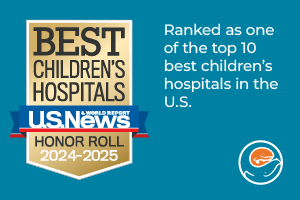 Our multidisciplinary team works to help assure children with sickle cell have full, active lives. Seattle Children’s Sickle Cell Program brings together experts from many fields to care for all aspects of your child’s health. We work to support your child at home, at school and in the hospital. We teach about the disease, give preventative screenings and provide the most up-to-date treatments, including cure with stem cell transplant.
Our multidisciplinary team works to help assure children with sickle cell have full, active lives. Seattle Children’s Sickle Cell Program brings together experts from many fields to care for all aspects of your child’s health. We work to support your child at home, at school and in the hospital. We teach about the disease, give preventative screenings and provide the most up-to-date treatments, including cure with stem cell transplant.
We work with you, your child, your family and your child's primary provider to get your child the right care and services. We provide most of our care and teaching at Seattle Children’s Odessa Brown Children’s Clinic (OBCC).
- For more information, call the sickle cell nurse practitioner at OBCC, 206-987-7263.
- To make an appointment, call 206-987-2106.
Care beyond childhood
We help our patients keep getting the care they need as they become adults. We work to make sure there is a smooth transition to the adult sickle cell clinic at the Fred Hutchinson Cancer Center.
Sickle Cell Team
Sickle cell disease research and advocacy to improve outcomes
Dr. M. A. Bender leads the Northwest Sickle Cell Collaborative (NWSCC). The group works to improve education about the disease, streamline screening and make sure that people with sickle cell across the state get the best possible care. We work with community organizations like the Seattle Metropolitan Sickle Cell Task Force to provide outreach and education.
Bender plays a lead role in the Pacific Sickle Cell Research Collaborative, a federally funded project to define quality care for people with sickle cell disease and overcome barriers to it. He is part of a team working to assess the clinical and economical benefits of cures for sickle cell disease over the lifetime of patients. The project is funded by the National Institutes of Health and aims to clarify the long-term benefits of gene therapies for sickle cell.
In the lab, Bender studies the molecular biology of the abnormal genes that cause sickle cell. Other lab research may lead to better understanding of small strokes that affect many children with sickle cell disease.
Paying for Care
Learn about paying for care at Seattle Children’s, including insurance coverage, billing and financial assistance.


